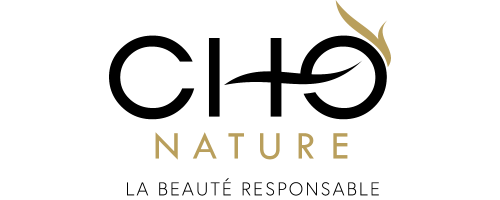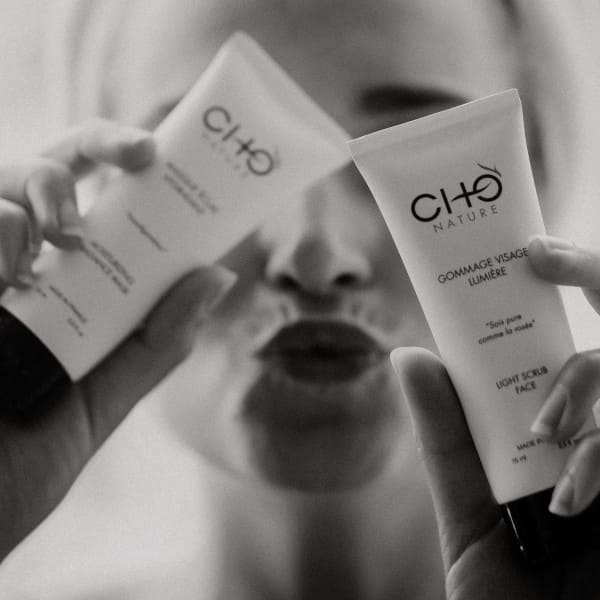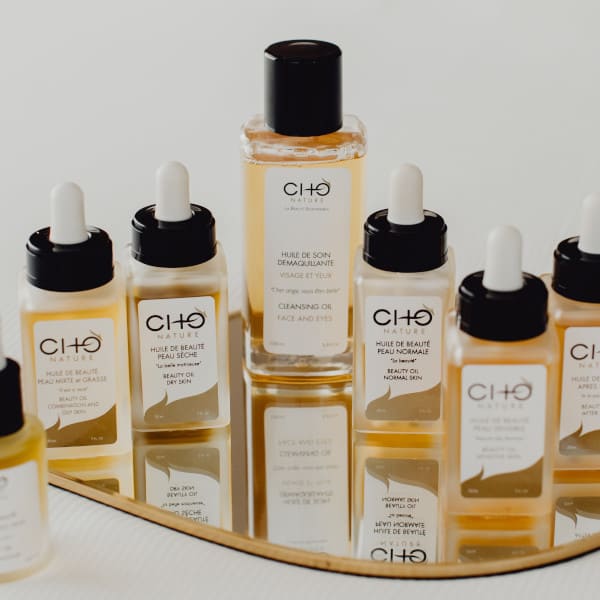NATURAL ORGANIC COSMETICS: INCREASINGLY PROVEN EFFECTIVENESS
- Cosmétologie CHO
- 4958 views
- 0 comments
When we created CHO NATURE, organic cosmetics were still very timid: few but very powerful brands that always made the same criticisms. They were criticized for having thick, greasy textures and unpleasant or even heady smells. Product marketing was from another era. But the most important thing was that the Science god was still very strong and commanded that synthetic chemistry was more efficient than nature. Consumers had serious doubts about the effectiveness of these natural products. Morality, only the unconditional followers of naturalness were seduced.
Fortunately things have changed a lot:
Science has demonstrated its own limits: researchers have discovered the harmfulness of certain substances: parabens, aluminum salt, phenoxyethanol, etc. Every day, new synthetic molecules are banned from formulations, every day studies demonstrate the dangerousness of molecules. synthetic chemistry: carcinogens, endocrine disruptors, etc.
In fact, the general public has started to take an interest in “natural” / “organic” products.
At the same time, raw material suppliers have rediscovered natural materials: we had also forgotten that 40 to 70% of the world's pharmacopoeia came from nature, and we only know 5% of the world's flora! This is how new natural molecules have appeared and they undoubtedly compete with their synthetic counterparts: hyaluronic acid, vitamin C….. Other materials are rediscovered: essential oils with their virtues known 4,500 years BC in ancient Egypt, the same for vegetable oils.
Scientific studies come out providing proof of the effectiveness of organic cosmetics, specifying the conditions for a good formulation: beautiful raw materials chosen according to their biochemical analysis, in sufficient quantity, avoiding the risk of interactions between molecules, therefore short formulations. It is also essential to have regular, repetitive routines.
Today it is scientifically proven, through objective studies, that we can act: on the appearance of wrinkles, on the depth of wrinkles, on the luminosity of the complexion, on brown spots, on the ring, the pocket, on the oval of the face...
Nature seems to be taking revenge. And today natural and organic cosmetics worry the big names in traditional cosmetics, because they are indeed much less risky for health (beware all the same of allergens which also exist in nature) and above all they are just as effective.
There are all the same precautions to be taken with natural and organic cosmetics: read the allergens carefully, make sure that the product is labeled by a real recognized international label (guarantee of seriousness in the raw materials, traceability, control, regulations and also in manufacturing), prefer short formulas to long formulas which do not concentrate enough active ingredients. Be wary of brand labels which rely heavily on marketing and which do not have the same requirements for naturalness and monitoring/control as standard labels: Cosmébio, Eco, Cosmos organic, Cosmos natural, BDIH, Natrue, Soil Association which are recognized for all European countries. A product may contain organic raw materials without being considered an organic product.
At CHO NATURE, we have our in-house formulation laboratory. Joseph our formulation manager is the guarantor of the effectiveness of the products, we give him our specifications in which we put no financial limit. He must find the best formula with the best active ingredients. He has complete freedom. Only the result counts, we want effective and healthy products. Once he has these specifications, he consults the suppliers, verifies the objectification of the claims and we start the tests. They can take 6 months or even a year if we are not satisfied with the results.
So we can ask ourselves the question of the cost of such an approach, yes it has a cost.
Natural raw materials often have a higher price than synthetic materials, putting 67% on average of assets, this has a cost. Making effective quality costs more than making organic cosmetics at a minimum, i.e. sticking to the minimums required by the labels and incorporating by-products such as: CAPRYLIC/CAPRIC TRIGLYCERIDE into the formulas , COCO-CAPRYLATE/CAPRATE. In addition, the price of natural raw materials is very fluctuating, it depends on the harvest and is subject to the influences of the weather, too much sun not enough, too much rain not enough, and also geopolitics as we currently know it with the war in Ukraine. Sometimes we encounter ruptures. Sometimes we encounter supply shortages: hazelnut oil when the hazelnut fields are frozen in Turkey, rosewood essential oil has been out of stock for some time.
So this beautiful organic, natural cosmetics is necessarily more expensive than classic cosmetics. It becomes a luxury product, and we can speak of luxury organic cosmetics. Which is paradoxical and yet very real.
IN SUMMARY :
A natural or organic cosmetic that is effective for the skin and health is a cosmetic that:
1. Has a short formulation: few ingredients in high concentration
2. A formula that contains preservatives to protect both the product and the skin
3. Real active ingredients, no esterified oil at the start of the formula
4. A selection of effective raw materials: in-depth analysis of the quality of the raw material
5. Labeled products
Today our products summarized in a few figures:
17 is the maximum number of ingredients in the formula
2 is the maximum number of preservatives used in our formulas
67 is the average % of active ingredients contained in our formulas
8 is the number of perfect products: 100% active – 100% natural
65 is the average % of ingredients from organic farming.
99.7 is the average % of ingredients of natural origin, only the preservatives are nature-identical.





comments (0)